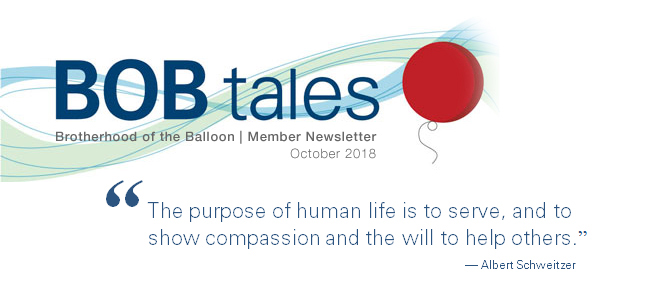
A Note from Deb Hickey:
Dear Members:
In our July/August newsletter, I wrote about my friend, “Kate.” Last April, at age 32 and in her third trimester of pregnancy, she was diagnosed with pancreatic cancer and given less than a year to live.
Kate found me on a cancer support website. She had the same diagnosis my husband had: stage IV, metastatic, pancreatic neuroendocrine carcinoma. She was ecstatic when I told her that Mark was still alive; and she pleaded with me to share with her everything we had done to keep him here.
Over the next six months, I supported Kate the best I could in her horrific journey with this all-too-familiar disease: In addition to sharing with her all the supplements and foods I’d added to Mark’s diet—not to mention the rather odd herbal remedies and Chinese medicine I introduced—I delivered gifts, communicated with her daily, and prayed for her often.
Kate’s oncologist had given her the same information Mark’s doctor had given us: The rigorous chemotherapy regimen—the kind that wipes out your immune system and causes irreparable damage to the body—would treat the disease for a short time only; the cancer was incurable and her prognosis was dire.
I mentioned in previous BOB Tales that I believe my husband experienced a miracle. After his chemotherapy cycle ended in July 2014, he was pronounced “disease free” by his oncologist, something we were told was impossible. Mark had also already lived well beyond his doctors’ predictions. We were elated. At the same time, his oncologist urged us to be cautious as the cancer was likely to return.
It’s been more than four years. Mark continues to deal with some awful side effects from his treatment. But we get through every day together with a grateful heart.
I’m overjoyed—and still in awe—to report that Kate’s latest scan shows no evidence of disease at the primary tumor site and only a few “spots” on her liver, which could be scar tissue. As in Mark’s case, doctors are astounded. Kate, like Mark, has defied the odds. I’m grateful to have been a small part of her healing and will continue to pray that her cancer doesn’t return.
If you remember, the message from my earlier newsletter memo about Kate referenced Booker T. Washington’s quote, “If you want to lift yourself up, lift up someone else.” I can’t think of anything more important in life than helping others.
On a different note, I wanted to update our members on two important clinical trials. The COMPPARE trial, led by Dr. Nancy Mendenhall at the University of Florida Proton Therapy Institute, is a prospective, non-randomized, multi-year study. Its goal is to answer the important question of whether there are meaningful result differences between protons and photons for men with prostate cancer. The enrollment goal is 3,000 (1,500 per arm) and they expect to have 44 sites participating—24 proton and 20 photon. The trial opened on July 1 and UFPTI is the first to enroll patients. Once the necessary paperwork, contracts and IRB approvals are finalized, the other sites will be accepting patients. We’ll keep you updated.
Learn more about the COMPPARE trial.
The PARTIQoL trial is also under way. This is the first randomized trial of its kind to evaluate proton therapy vs. IMRT. Back in our March newsletter, we mentioned there were seven participating sites and 256 patients enrolled. The goal is 400. We are happy to report that five more sites have signed on to participate and another is about to be added. Enrollment has also picked up; 300 patients are on board and about five new patients are signing up monthly. Stay tuned.
Read the BOB Tales report on the PARTIQoL trial from March for more details.
I can’t believe it’s already fall and here we are with our October issue. As you dig out your rakes and start dreaming of pumpkin pie, we hope you’ll take a minute to learn what’s happening in the proton world: The number of proton centers continues to grow—after Argentina and Australia build facilities, the only continent without protons will be Antarctica! There is a surprising, new treatment for metastatic prostate cancer; we report on a prospective study on the benefits of HIFU and one physician’s critical review; we re-run an important article on the anxiety-provoking PSA “bounce;” and we announce a new initiative by the National Association for Proton Therapy to help our veterans have easier access to proton therapy.
As always, we love to hear from our members—please send us your feedback.
Deb Hickey
To print the BOB Tales newsletter or view the newsletter with a larger font size, click here for the PDF file.
In this Issue:
- Proton Therapy is Expanding Globally
- Surprising Treatment for Metastatic Prostate Cancer
- Is High Intensity Focused Ultrasound (HIFU) a Reasonable Prostate Cancer Treatment Option?
- PSA Bounce
- BOB Spouses and the Relationships We Build
- Food Safety Mistakes
- Men: Eat Your Carrots
- Best Joint Foods
- White Noise and Sleep

Proton Therapy is Expanding Globally
On August 3, 2018, Medscape published an article on this subject. The theme of the article is that the U.S. is facing some challenges, mostly connected with the lack of scientific studies proving the superiority of proton therapy over conventional radiation. Yet the U.S. is leading the world with 28 proton centers in operation and 23 more under construction or in development, and the rest of the world is jumping on board with proton centers springing up virtually on every continent.
Worldwide, there are 63 proton centers in operation with 32 more under construction and 16 in the planning stage according to the Particle Therapy Co-operative Group, a nonprofit organization. And now that Argentina and Australia are constructing proton centers, there will soon be proton centers on every continent except Antarctica.
Expansion of proton therapy is expected to accelerate in Europe and Asia in the coming years. Japan has the largest number of centers in Asia, but new centers are being built in China, Singapore, Thailand and South Korea.
The Middle East/North Africa region is also joining the proton movement. A proton center recently opened in Saudi Arabia; another is under construction in the United Arab Emirates; Egypt is planning a proton center at a children’s hospital; and Israel has just announced plans to build a proton center.
Surprisingly, our neighbors up north in Canada have not shown much interest in building proton centers. There is a proton research facility in Vancouver, BC, but Canadians looking for proton therapy mostly travel south to the U.S. for treatment. We have many Canadians in the BOB.
Despite this worldwide expansion, proton therapy is still considered by many to be a niche market. To date, about 165,000 patients have been treated with proton therapy for a wide range of cancers. In 2017, only about 0.1 percent of patients with cancer received proton therapy.
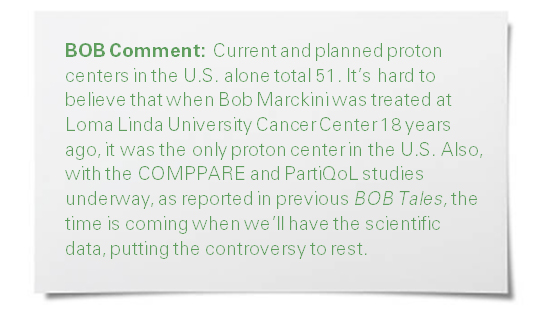
Surprising New Treatment for Metastatic Prostate Cancer
According to an El Pais health report, high-dose testosterone may be an effective treatment for aggressive prostate cancer.
Androgen deprivation (hormonal) therapy (ADT) is commonly used to suppress testosterone production, thus “starving” the cancer to halt its growth. But it doesn’t work forever. “Eventually prostate tumors learn how to get around the lack of testosterone and find a way to grow,” says David Samadi, MD, board-certified urologic oncologist at Lenox Hill Hospital.
Researchers, however, have found that once a tumor has adapted to growing with little testosterone, high levels of testosterone may be able to literally poison it.
Additional research is being conducted on this procedure, which is called “bipolar androgen therapy.” This treatment could be the answer to those who are dealing with hormone refractory (resistant) prostate cancer.
Is High Intensity Focused Ultrasound (HIFU) a Reasonable Prostate Cancer Treatment Option?
European Urology recently reported on a prospective study involving 625 men in Europe. The journal stated that HIFU was found to be an effective treatment for localized prostate cancer with high overall survival and high metastasis-free survival.
On August 21, 2018, Dr. Gerald Chodak from Medscape said, “The strengths of the study are that it’s prospective, it’s multi-centered, and it includes reasonable follow-up.” However, he was somewhat critical of the study for three reasons:
- Twenty-eight percent of the patients treated were low risk and 55 percent were Gleason 3+4. Many in these early-stage groups would have been candidates for active surveillance. And reporting data on men in this category may not be very good proof of the effectiveness of this treatment.
- While the study showed a relatively high urinary-continence rate, erectile dysfunction results were monitored, but not reported.
- The median follow-up was only 56 months, and a high percentage of the men were fewer than two years post-treatment. It’s hard to draw meaningful conclusions with only two years of follow-up. Also, 25 percent of the patients treated had recurrences and were eligible to be re-treated.
Dr. Chodak concluded that the argument for using HIFU for treating localized prostate cancer needs more investigation, stating, “Showing data that’s this immature, with these results, does not provide great confidence that focal therapy is going to prove to be a valuable way to management. And is it going to be a good treatment for men that don’t need to be treated at all? And is that an argument in favor of doing focal therapy so men avoid some of the psychological trauma of watching their disease without active therapy? I don’t believe that’s how we should back into a treatment for managing men who don’t need treatment.”

We’ve been producing BOB Tales newsletters monthly for nearly 18 years. During this time there have been important articles that many new members haven’t seen and some long-time members may have forgotten. So, we decided to periodically re-run articles from past newsletters. The following is from November 2004.
PSA Bounce
Many of us have experienced the anxiety-provoking PSA “bounce” following treatment. Several of our members sent us copies of a presentation given at the ASTRO 46th Annual Meeting (Abstract 171. Oct. 6, 2004). The thrust of the article is that research shows a post treatment bounce in PSA doesn’t appear to indicate that patients will die of prostate cancer any sooner than patients without a bounce.
PSA bounce occurs for at least one out of five patients treated with all forms of radiation therapy. It usually happens during the first three years following treatment. Studies have confirmed that there’s no clinical significance for patients with a PSA bounce compared with non-bounce patients.
The study was based on reviewing pooled data from nine institutions representing 4,839 patients with T1-T2 prostate cancer treated with EBRT (external beam radiation therapy) alone. For purposes of this study, PSA bounce was defined as an increase of 0.2 ng/ml or more, followed by a decline.
According to lead investigator, Dr. Eric M. Horwitz, “These results are clinically important in that if people experience a bounce, we can reassure them that there is no long-term difference in survival or cure.”

BOB Spouses and the Relationships We Build
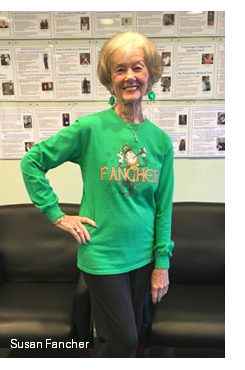 We’ve written a lot about our growing relationships with some of our members, but we don’t often highlight some of the friendships we’ve built with their significant others. Prostate cancer is never a disease that affects an individual; it affects everyone who is close to him, most often his significant other—his partner—his caregiver. Oftentimes, it’s the spouse or significant other who makes the initial inquiry with us asking questions about proton therapy for prostate cancer. Through these communications and our continued follow-up, we develop close relationships with many of our members’ partners and we truly respect and appreciate their care and concern for their loved ones. Some of our relationships with member spouses continue to grow over time, even after their loved ones have passed away.
We’ve written a lot about our growing relationships with some of our members, but we don’t often highlight some of the friendships we’ve built with their significant others. Prostate cancer is never a disease that affects an individual; it affects everyone who is close to him, most often his significant other—his partner—his caregiver. Oftentimes, it’s the spouse or significant other who makes the initial inquiry with us asking questions about proton therapy for prostate cancer. Through these communications and our continued follow-up, we develop close relationships with many of our members’ partners and we truly respect and appreciate their care and concern for their loved ones. Some of our relationships with member spouses continue to grow over time, even after their loved ones have passed away.
In 2010 we wrote a story in our newsletter about the passing of BOB member Jack Fancher, who was treated with proton therapy for prostate cancer in 2000. Jack lost his battle with pancreatic cancer (unrelated to prostate cancer) after a “beautiful and spiritual life,” having spent much of his time traveling and building a home in Prescott, AZ with his wife, Susan.
Following Jack’s passing, Susan kept in close touch with Deb Hickey. After every newsletter is issued, it’s only a matter of hours before Susan sends an email to thank Deb for her efforts. After last month’s issue, Susan wrote:
Another masterpiece of your fine ministry to all of us! You are a real treasure and definitely one of God’s special angels.
Susan and Deb also share day-to-day exchanges about their lives and often send photos back and forth. “It’s amazing that 18 years after her beloved Jack was treated with proton therapy and eight years after he passed, Susan continues to enjoy reading and learning about advances in proton technology,” said Deb. “She’s a wonderful lady who also likes to be updated on my husband’s health and how my daughter is doing.”
To this day, Susan credits proton therapy with successfully treating Jack’s prostate cancer and allowing the two of them to spend many healthy and happy years together. Susan has also contacted Deb on several occasions to ask about proton therapy for friends and acquaintances who may benefit from the treatment.
When Deb asked Susan if she could write about their friendship in this month’s BOB Tales, Susan wrote:
I’d be honored to be featured and have you mention our exquisite friendship! My darling Jack died February 15, 2010. It’s hard to believe it’s been so long. His healthier life began after his successful proton treatment and with our Brotherhood of the Balloon family, which meant so much to Jack.
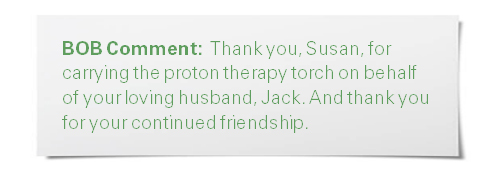
Please Reach Out!
Is your significant other a BOB member? If you’d like to share your story about how prostate cancer and proton therapy affected you, we’d love to hear from you!
Please Help Veterans Access Proton Therapy
The National Association for Proton Therapy approached us last month to help in their efforts to expand proton therapy coverage for US veterans. NAPT’s executive director, Scott Warwick, and his team determined that having our members who are veterans use a template letter that they can personalize with their own stories of prostate cancer and proton therapy treatment and send to their state representatives would have the most impact. They also identified and sent us a list of the specific state representatives who are part of the House or Senate Veterans’ Affairs Committees and cross-referenced those names with the states that have proton centers.
We searched our membership database state-by-state, identified the veterans, and sent them the template letter with instructions on how to contact their state reps. We also did this for the remainder of our membership database, contacting all our veterans (a few hundred) and asked that they contact their state representatives and request them to urge the head of the Veterans Health Administration to examine the evidence supporting proton therapy and ensure a path for all veterans to have proton as a choice when fighting certain cancers.
We’ve received feedback from some of our members, thanking us for our efforts and assuring us they’ll send letters. We are appreciative as we know it takes time to personalize and send the letters!
Earlier this month, Bob Marckini and Deb Hickey attended a monthly membership call with the NAPT. During an update by Scott, Deb offered to extend our efforts in supporting this initiative by asking all of our members—not just veterans—to please lend their support and write their own letters to state representatives on behalf of our country’s veterans.
We know we have members who are willing to go above and beyond to “support the cause,” and we are confident they will do whatever they can to help others have access to the treatment they all benefited from. If you’d like to receive the template letter and instructions on contacting your state representatives, please send an email to Deb Hickey.

More Conversations with Contributors
As we’ve mentioned in the past, we receive a monthly report of members who have made contributions to the Robert Marckini Chair for Proton Therapy Research or Loma Linda University Health’s Vision 2020 campaign, though we don’t know the exact amounts given. Bob and Deb make every attempt to get in touch with everyone on these lists to thank them for their generosity. We also sometimes ask why they chose to make a donation. Last month, we shared a few quotes from recent conversations. Following are a few more:
I was treated with proton therapy nearly 11 years ago and today I’m doing great. I read the BOB Tales newsletter, all 20 pages, at least three times. I consider my contribution to proton therapy research at Loma Linda a “thank you” for my health and a “thank you” for the good read that lands in my inbox every month.
I was diagnosed with prostate cancer in 2003. I think it was the lowest point in my life. Of course I worried about my mortality, but I worried even more about the side effects I was bound to experience for the rest of my life … In early 2004, I underwent proton treatment; it was a high point in my life. I never thought prostate cancer treatment would be a high point in my life … I’m thankful every day.
…Well, I wouldn’t be here without the gift of proton therapy, so it makes perfect sense to give a gift back. I’ll do whatever I can for as long as I can.
If I had listened to my urologist, I would’ve had surgery and who knows what state I’d be in 14 years later. An acquaintance introduced me to protons. He also handed me Bob Marckini’s book. That guy is now my best friend … I’m feeling fine; my PSA is undetectable; and I just met my first grandchild. Should I go on?
How to Give to Proton Therapy Research
- Donate Online: Visit the LLUCC website.
- Send a Check: Make it out to “LLUCC Proton” with “Marckini Chair” on the memo line and send to: LLUH, Office of Philanthropy, P.O. Box 2000, Loma Linda, CA 92354.
- Make a Call: Contact Regina Joseph at 909-558-5010.
How to Give to Vision 2020
- Donate online: Visit the LLUH website.
- Send a check: Make it out to: “LLUH Vision 2020.” Mail to: LLUH, Office of Philanthropy, P.O. Box 2000, Loma Linda, CA 92354.
- Make a call: Call 909-651-2020.
How to Make a Future Gift
- Make a future gift: Contact Todd Mekelburg at the Office of Planned Giving at Loma Linda University Health at 909-558-5376 or [email protected].
- Other ways to give: Contact Matt Miller at the Office of Philanthropy at Loma Linda University Health at 909-558-3582 or [email protected].

NAPT Conference 2019
The National Association for Proton Therapy (NAPT) is the voice of the proton community. The organization provides education and awareness for the public, professional, and governmental communities. Join the National Association for Proton Therapy for the 2019 National Proton Conference March 24 - 27, 2019, at The Biltmore Miami Coral Gables in Coral Gables, FL. Attendees will include physicians, nurses, therapists, patients, proton therapy directors and managers. Learn more.
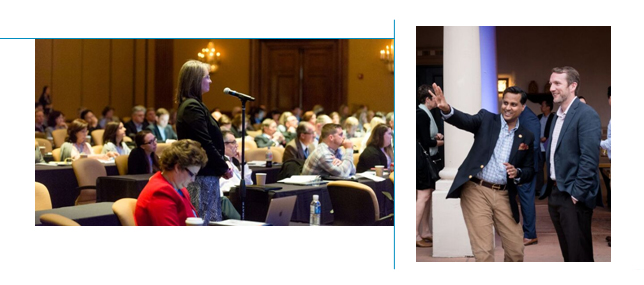

Food Safety Mistakes
One out of every six Americans gets food poisoning each year, and those are just the ones who report it. While some people spend a miserable night at home in the bathroom, 128,000 people are hospitalized and 3,000 die every year from food-borne illnesses. We frequently underestimate the risks of known pathogens in the kitchen while worrying a little too much about the benign bacteria in our overall environment. But how can we know when we’re putting our health at risk? Read on to learn some food-safety mistakes you don’t know you’re making—and how to fix them immediately.
Overstuffing Your Refrigerator
Your refrigerator is jam-packed and you can’t fit another thing inside. Since cold air can’t circulate, your refrigerator warms up and invisible bacteria can grow more rapidly.
Solution: The FDA recommends that you set the temperature at 40 degrees Fahrenheit or lower and put an inexpensive appliance thermometer in the refrigerator so you can monitor the temperature and adjust as necessary. Avoid over-packing your refrigerator to allow cold air to circulate.
Cutting Melons without Washing Them First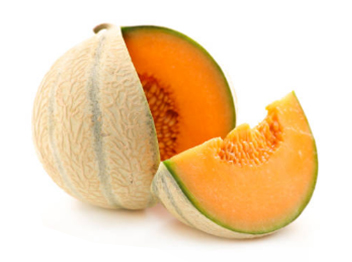
You place a cantaloupe on a clean cutting board and cut into it with a clean knife. You may have just dragged harmful bacteria from the outside onto the piece you’re about to eat. Dirty cantaloupes have been implicated in a listeria outbreak that killed or sickened many people. All raw produce can harbor harmful bacteria on the outside.
Solution: Rinse produce under cool, running water before peeling, cutting, cooking or eating. Use a produce brush to scrub firm fruits and vegetables like melons and cucumbers.
Having One Sponge and Never Disinfecting It
You wipe down the counter and clean your dishes with a sponge. Then you let it sit damp in a thin pool of water at room temperature until you need to clean again.
If you wipe your counter and then let your sponge sit in water at room temperature, you may have created a bacteria maternity ward.
Solution: First, get two different-colored sponges and use one for cleaning dishes and the other for cleaning messy sinks and counters, recommends Marisa Moore, RDN and spokesman for the Academy of Nutrition and Dietetics. Second, sanitize your sponges every night as part of your cleanup routine. The best method, according to Jennifer Quinlan, Ph.D., associate professor at Drexel University, is to microwave non-metallic wet sponges on high for one minute to steam them clean, or just place them in the dishwasher. Another solution is to replace your sponges regularly.
Judging Leftovers by Taste, Sight or Smell
Your leftover stir-fry has been sitting in the refrigerator for six days, but it still looks fine, so you have it for lunch. Unfortunately for you, the types of bacteria that cause food poisoning don’t affect the smell, taste or appearance of food.
Solution: Either freeze or dispose of leftovers within three to four days. Even a small bite can make you sick, advises Jennifer Quinlan, Ph.D.
Not Washing Your Hands Before Washing Produce
You grab lettuce and tomatoes from the refrigerator and rinse them in running water. But if you haven’t first thoroughly washed your hands, you’ll just transfer bacteria onto the produce, dashing your good intentions.
Solution: Wash your hands with soap and warm water for 20 seconds before preparing or eating food. “Hand-washing may be the single most important step to preventing food poisoning,” advises Marisa Moore, RDN. In fact, the Centers for Disease Control and Prevention calls hand-washing a “do-it-yourself vaccine” because it has such a big impact on your health.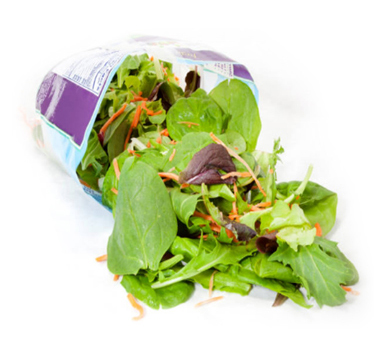
Rinsing Pre-Washed Greens
The bag says “triple washed,” but you want to give it one more rinse to be safe. Any bacteria lurking where you’ve rewashed the greens has attached itself to your salad.
Solution: Use pre-washed greens straight from the bag as intended. In 2007, a panel of produce- safety experts reviewed the available research and recommendations and concluded that packaged salads labeled “washed,” “triple-washed,” or “ready to eat” don’t need an additional rinse. They’re already safe to eat, and washing them again may lead to cross-contamination from dirty sinks, colanders, and bowls.
Learn more food safety mistakes.
Best Joint Foods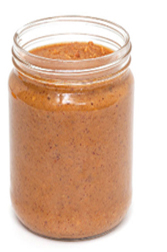
The name “psoriatic arthritis” sounds complicated, but according to registered dietician Ashley Koff, it doesn’t have to be. The “itis” piece means inflammation and you can make simple changes in your diet that can help reduce inflammation. She recommends eating foods that are natually rich in omega-3 fatty acids (nut butters, fruits, green leafy vegetables) and reducing your consumption of highly processed foods and oils (sugar, vegetable and seed oils, processed meats). Koff recommends a whole foods diet with an emphasis on foods that are anti-inflamatory.
Men: Eat Your Carrots
Carrots are rich in antioxidants, essential nutrients like vitamin E and beta-carotene, and they have also been linked to eye health. But did you know carrots are specifically good for men? Following are a few things we think our members should know:
- Carrots are good for sperm. Since carrots are rich in vitamin E and beta-carotene, they help prevent damage and boost sperm health. Studies suggest that men who eat carrots regularly are able to produce more and better- quality sperm.
- Carrots are good for erectile dysfunction. Carrots, rich in potassium and vitamin E, can help reduce the effects of ED. Antioxidants found in carrots also slow down the aging process and thus help in age-related ED.
- Carrots keep the prostate healthy. Some experts suggest that men who consume sufficient amounts of vitamin A and antioxidants during their younger years lower their chances of a prostate cancer diagnosis later in life.
- Carrots improve your bowels. Carrots are rich in fiber and aid in the easy movement of bowels thus helping to prevent constipation.
Series: “Make Vegetables Taste Good
This is the 23rd segment on a subject that’s consistent with our Anticancer series. We made it our mission to find recipes that make vegetables and other healthful foods taste delicious. And we’ve tried them all!
Two words—Brussels sprouts. If you don’t have a go-to recipe for Brussels sprouts, or you’ve tried them and haven’t found them absolutely delicious, well, this is your lucky day. This simple recipe may change your life.
Also, Brussels sprouts are a cruciferous vegetable. They contain phytochemicals, vitamins and minerals, and fiber. Eating them is often encouraged as a way to lower risk for heart disease and certain types of cancer.
Roasted Brussels Sprouts
Ingredients
- 1 pt. brussels sprouts (about a pound)
- 4 to 6 tbsp. extra virgin olive oil to coat bottom of pan
- 5 cloves garlic, peeled
- Salt and pepper to taste
- 1 tbsp. balsamic vinegar
Directions
Pre-heat oven to 400 degrees. Trim bottom of Brussels sprouts and slice each in half, top to bottom. Heat oil in cast-iron pan on medium-high until it shimmers. Put sprouts cut-side down in one layer in pan. Add garlic and sprinkle with salt and pepper. Cook until sprouts begin to brown on bottom; then transfer to oven. Roast, shaking pan every five minutes, until sprouts are brown and tender (about 10 to 20 minutes). Taste and add more salt and pepper if necessary. Stir in balsamic vinegar, and serve.
Ketchup Can Reduce Cancer Risk, Study Says
Scientists in Spain suggest cooked tomatoes, pasta sauces, and even ketchup can help reduce the risk of cancer. Cooked tomatoes are better—as the lycopene increases its probiotic effect leading to higher levels of healthy bacteria in the gut. Researchers say the tomato extracts inhibit cancer cells’ ability to spread, eventually killing them off.
White Noise and Sleep
Deb Hickey swears by her white noise machine. Turns out, it may be the reason she sleeps so soundly. Even in sleep, your hearing is alert. This makes you vulnerable to noises during the night—car horns, thunderstorms, random house creaks—that can increase your heart rate, raise your blood pressure, and even wake you up.
Ever considered a white noise machine? White noise isn’t the most dynamic sound in the world, but it’s structure allows your brain to block out disturbing sounds and keep you asleep. White noise contains many tones, but each one has the same intensity. It’s monotonous, predictable, and downright boring—exactly what your brain needs during sleep.
If you don’t want to shell out $50 for the little gem Deb keeps by her bed, you may also consider a fan.

Way to make it interesting!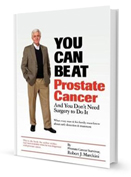
We read and appreciate every book review that’s submitted on Amazon. Your reviews help Bob Marckini’s book stay visible to the thousands of users who are looking for information on prostate cancer treatment options. As a result, you are helping guide newly diagnosed men, who are diligently searching for a non-invasive treatment option with a lower risk of side effects, to proton therapy. In our opinion, this is one quick-and-easy way to “pay it forward” in appreciation for your proton treatment.
We pasted an excerpt below from a review posted earlier this month. This may be the first review that includes photos. Way to make it interesting, David B!
This guy included photos!

You didn’t get prostate cancer yesterday and it’s not going to kill you tomorrow.
I was blessed to have already known about proton beam therapy and the James M. Slater Proton Therapy Treatment and Research Center when I was diagnosed in 2017… Everything came clearly into focus after reading Bob Marckini’s book, “You Can Beat Prostate Cancer: And You Don’t Need Surgery To Do It.”
… If you’ve been diagnosed with prostate cancer (Note: Proton also treats other types of cancers), take a deep breath and consider this: You didn’t get cancer yesterday and it’s not going to kill you tomorrow. Do your due diligence and you’ll learn for yourself the efficacy of proton therapy … —David B.
Visit Amazon to see David’s full review and photos.
Please take a minute.
Some medical professionals aren’t informed about proton therapy and most mainstream media discount proton therapy as a viable treatment option. We’re fighting daily for this to change. One way is through Bob’s book. Please help others find it! Just post a review and rate it from one to five stars. Click on the gray “Write a Review” button. It takes only a minute!
And while you’re at it, why not post a photo of yourself during or after treatment?
Buy Online, in Bulk or in Spanish
Online: Paperback: $19.00--•--Kindle: $7.99--•--NOOK Book: $9.99--•--Apple iBook: $9.99
In Bulk: Conctact us for a discount price list. Proceeds from book sales support proton therapy research through the Robert J. Marckini Endowed Chair at LLUCC.
In Spanish: Buy the print version or in eBook format.
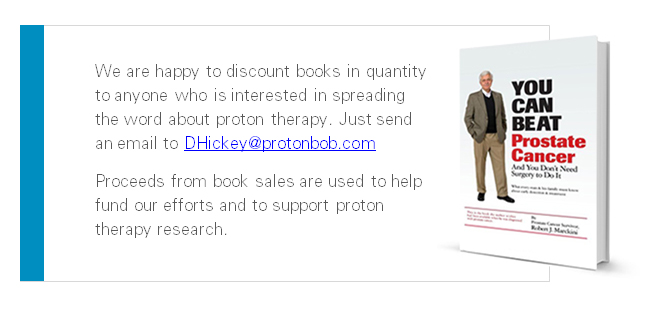

Lightning Storm in a Car—Do Tires Protect Us?
You are quite safe in an enclosed metal vehicle during a lightning storm, but not because of the tires. It’s because the metal “cage” of your car which directs the current around you and discharges it to the ground, easily overcoming the minor resistance of the tires. But, be careful not to touch anything metallic inside the vehicle during the storm.
This answer was provided by “Ask Marilyn” from Parade Magazine.
How Can the Sun Burn with No Oxygen?
The sun, a ball of dense gas, doesn’t need oxygen because it doesn’t technically “burn.” It glows because nuclear fusion occurs in its core: Hydrogen is fused into helium, releasing an enormous amount of energy. Spreading from the center of the sun to its surface, this process—which will keep our favorite star shining for billions of years—results in the heat and light that radiates into space.
I Didn’t Know That!
Damascus, Syria was flourishing a couple of thousand years before Rome was founded in 753 BC making it the oldest continuously inhabited city in existence.
Istanbul, Turkey is the only city in the world located on two continents.
The full name of Los Angeles is “Pueblo de Nuestra Senora la Reina de Los Angeles de Porciuncula.” It can be abbreviated to 3.63 percent of its size: L.A.
The term “The Big Apple” was coined by touring jazz musicians of the 1930s who used the slang expression “apple” for any town or city. Therefore, to play New York City is to play the big time.
Who would’ve thought? There are more Irish in New York City than in Dublin, Ireland; more Italians in New York City than in Rome, Italy; and more Jews in New York City than in Tel Aviv, Israel.
The first city to reach a population of 1 million people was Rome, Italy (in 133 B.C.) There is a city called Rome on every continent.
Estate Planning Hints
BOB Member Ron Hendricks is Director of Gift Planning for Trinity Western University. He regularly copies us on his “News from Ron” mailings, which are helpful hints on estate planning for readers of his newsletters. We have found Ron’s suggestions to be timely and beneficial. With his permission we periodically share some of his wisdom with our membership. This segment is called …
Where are they?
Should medical papers and a living will be kept in your safety deposit box? No—that is not a good place. If you are ill and in the hospital, the durable power of attorney for healthcare, advance healthcare directive or living will need to be available to your chosen power of attorney. They may not have access to your safety deposit box. Your healthcare powers should be given to this friend or adviser so they are available if you are in the hospital and need their assistance.
Is it important to express your preferences on end-of-life care through an advance directive or living will? Yes it is very important that you make these choices while you are coherent. While the states may use different forms and have a different name for the document, all permit you to express your healthcare preferences for end of life.
Is a family member who lives in your area a good choice for your healthcare agent? While you can select any person who lives in another state as your healthcare agent, it is helpful to select a person who is in the area so that he or she is available if you need an immediate healthcare decision.
Will your personal preferences on pain management have substantial impact on your end-of-life care? If you desire a high comfort level even though that leads to less mental clarity, or prefer a more moderate or even low comfort level with greater mental clarity, that will have great impact on the level of pain medication provided to you.

Last Month’s Brain Teaser
In 1990, a person is 15 years old. In 1995, that same person is 10 years old. How can this be?
Answer: The person was born in 2005 BC (In 1995 BC he would be 10; and, five years later, in 1990 BC, he’d be 15)
Winner: Last month’s winner is Luke Holzen from Pittsburgh, PA. Congratulations, Luke—your signed copy of Bob Marckini’s book is in the mail!
New Brain Teaser
An easy one?
What is unusual about the following words?
Revive, banana, grammar, voodoo, assess, potato, dresser, uneven
Send your answer to [email protected] for a chance to win a signed copy of Bob Marckini’s book, You Can Beat Prostate Cancer.
Winter Boots (Source)
Did you hear about the teacher who was helping one of her pupils put on his boots?
He asked for help and she could see why. Even with her pulling, and him pushing, the little boots still didn’t want to go on. By the time they got the second boot on, she had worked up a sweat.
She almost cried when the little boy said, “Teacher, they’re on the wrong feet.” She looked, and sure enough, they were. Unfortunately, it wasn’t any easier pulling the boots off, than it was putting them on. She managed to keep her cool as, together, they worked to get the boots back on, this time on the correct feet.
He then announced, “These aren’t my boots.” She bit her tongue, rather than get right in his face and scream, “Why didn’t you say so?” Once again, she struggled to help him pull the ill-fitting boots off his little feet.
No sooner had they got the boots off when he said, “They’re my brother’s boots. But my mom made me wear ’em today.” Now she didn’t know if she should laugh or cry. But she mustered up what grace and courage she had left to wrestle the boots back onto his feet again.
Helping him into his coat, she asked, “Now, where are your mittens?” He said, “I stuffed ’em in the toes of my boots.”
She’ll be eligible for parole in three years.
A Wrinkle in Time (Source)
A little girl sat on her grandpa’s lap and said, “Did God make me?”
“Yes,” the grandpa replied.
“Did God make you too?”
“Yes,” the grandpa said.
“Well,” the little girl said, looking at his wrinkles and thinning hair. “He sure is doing a better job nowadays!”
Did you ever wonder …? (Source)
- Why don’t you ever see the headline “Psychic Wins Lottery?”
- Why is “abbreviated” such a long word?
- Why is it that doctors call what they do “practice?”
- Why is lemon juice made with artificial flavor, and dishwashing liquid made with real lemons?
- Why is the person who invests all your money called a “broker?”
- Why is the time of day with the slowest traffic called rush hour?
- Why didn’t Noah swat those two mosquitoes?
- Why don’t sheep shrink when it rains?
- Why are they called apartments when they’re all stuck together?
- When dog food is “new and improved” tasting, who tests it?
- If con is the opposite of pro, is Congress the opposite of progress?
Quote of the Month:
“I believe in God as I believe the sun has risen, not because I can see it, but because by way of it I can see everything else.” —C.S. Lewis

Sparky (Source)
For Sparky, school was all but impossible. He failed every subject in the eighth grade. He flunked physics in high school, getting a grade of zero. Sparky also flunked Latin, algebra and English. He didn’t do much better in sports. Although he did manage to make the school’s golf team, he promptly lost the only important match of the season. There was a consolation match; he lost that, too.
Throughout his youth Sparky was awkward socially. He was not actually disliked by the other students; no one cared that much. He was astonished if a classmate ever said hello to him outside of school hours. There’s no way to tell how he might have done at dating. Sparky never once asked a girl to go out in high school. He was too afraid of being turned down.
Sparky was a loser. He, his classmates—everyone knew it. So he rolled with it. Sparky had made up his mind early in life that if things were meant to work out, they would. Otherwise he would content himself with what appeared to be his
inevitable mediocrity.
However, one thing was important to Sparky—drawing. He was proud of his artwork. Of course, no one else appreciated it. In his senior year of high school, he submitted some cartoons to the editors of the yearbook. The cartoons were turned down. Despite this particular rejection, Sparky was so convinced of his ability that he decided to become a professional artist.
After completing high school, Sparky wrote a letter to Walt Disney Studios. He was told to send some samples of his artwork, and the
subject for a cartoon was suggested. Sparky drew the proposed cartoon. He spent a great deal of time on it and on all the other drawings he submitted. Finally, the reply came from Disney Studios. He had been rejected once again … another loss for the loser.
 So Sparky decided to write his own autobiography in cartoons. He described his childhood self—a little boy loser and chronic underachiever.
So Sparky decided to write his own autobiography in cartoons. He described his childhood self—a little boy loser and chronic underachiever.
The cartoon character would soon become famous worldwide. For Sparky, the boy who had such a lack of success in school and whose work was rejected again and again, was Charles Schultz. He created the “Peanuts” comic strip and the little cartoon character whose kite would never fly and who never succeeded in kicking a football, Charlie Brown.
Low PSAs to all!
Bob Marckini and Deb Hickey
To print the BOB Tales newsletter or view the newsletter with a larger font size, click here for the PDF file.
NO MEDICAL ADVICE: Material appearing here represents opinions offered by non-medically-trained laypersons. Comments shown here should NEVER be interpreted as specific medical advice and must be used only as background information when consulting with a qualified medical professional.
